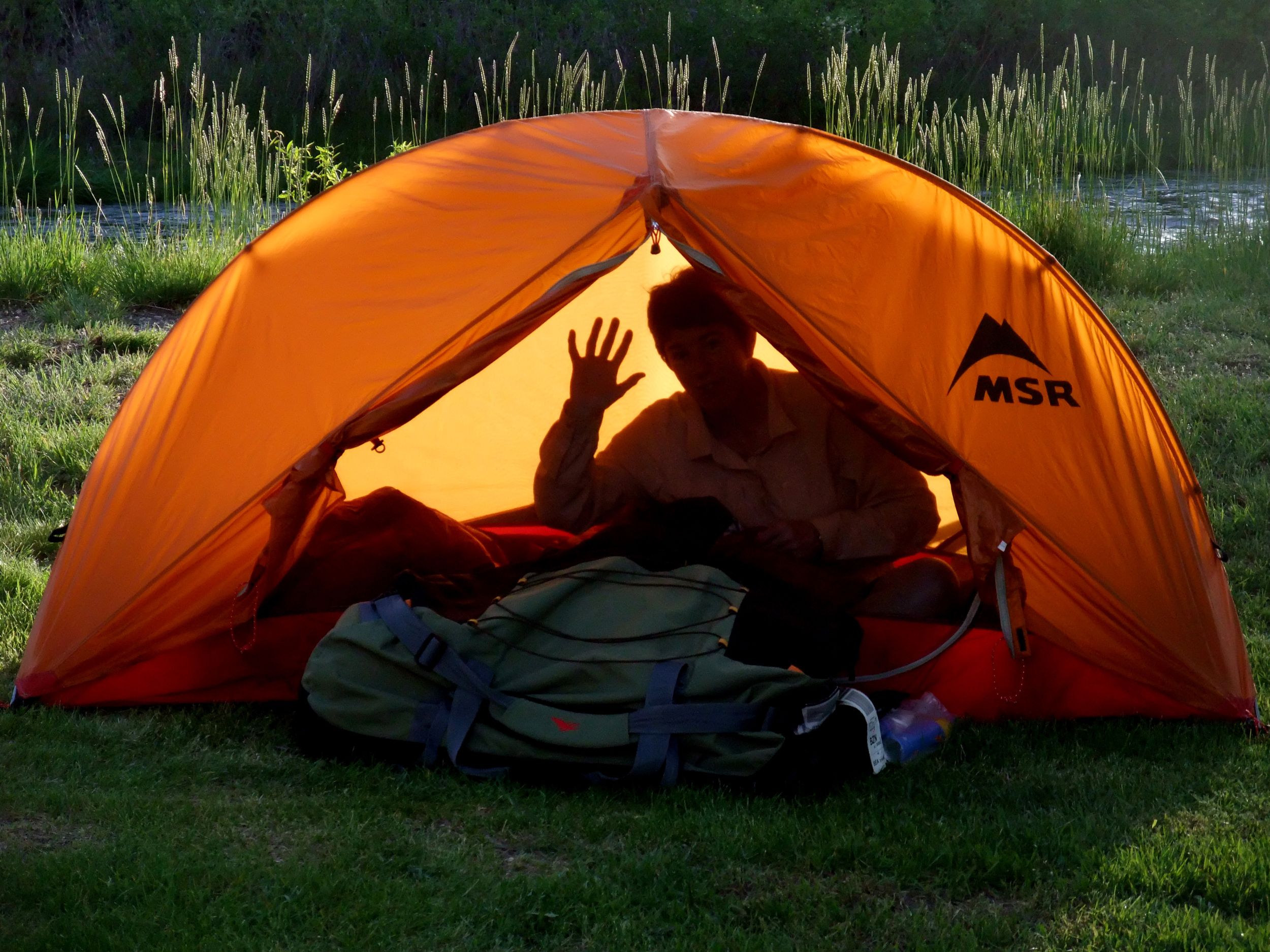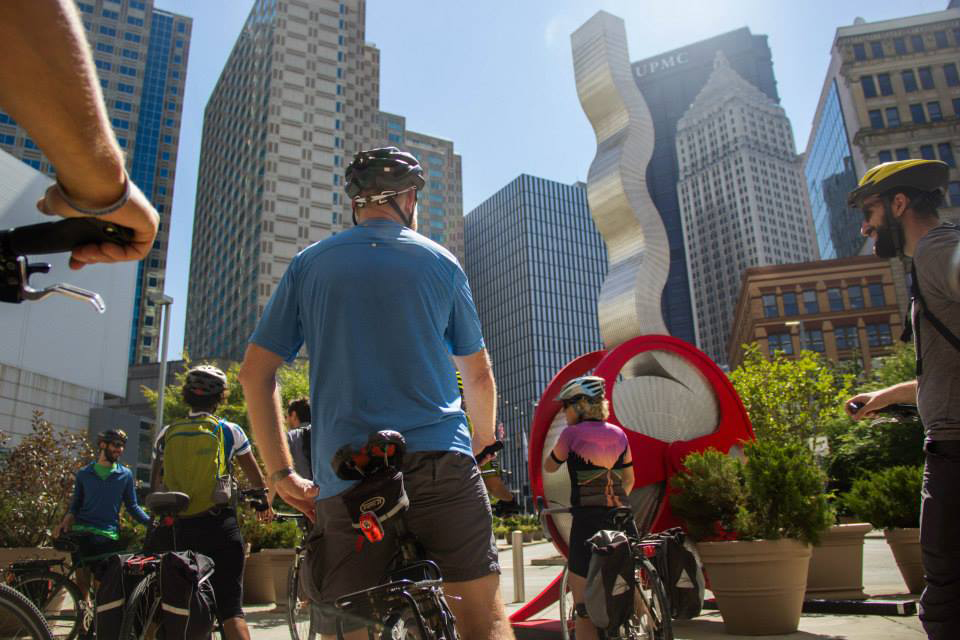7 Tips for Bicycle Touring on a Budget
Does the thought of a bike tour, spinning for hours on the open road, make your legs tingle with excitement? Me too! But one of the biggest drawbacks of a long tour, especially for young people, is the expense. Hell, you could spend a whole trip’s worth of cash just to get your bike ready.
My intention for writing this is to make known ways you can bike long distances for little money. On my first cross-country bike tour, I only meant to join my friend, Peter, for the first couple of weeks of his cross-country tour. Yet after those two weeks ended, I was enjoying life on the road so much that I didn’t want to turn back and I ended up riding with Peter from Oregon State to New York City in three month’s time.
And with little money saved, I was on a tight budget: just $10 a day.
The majority of the cyclists I encountered on the road were so-called “credit-card cyclists.” Their bikes were newly purchased, their gear came from next season’s REI catalog, and they arranged hotel rooms every single night.
“Maybe in 10 years,” I thought, “but for now, how can I stick to my budget so I can make it across the country?” Here are seven strategies I learned:
1. Travel with a Friend
Traveling with a friend is a good deal: It’s double the opportunity for half the cost. If you prefer not to share food expenses, at the very least, you can alternate who pays the park fee.
Plus, between the two of you, I’ll bet you know a dozen people you can stay with along the way. Lucky for me, Peter had friends and family members in Wyoming and South Dakota, where we needed a break the most.
And as someone who values his alone time more than almost anything, experiencing the trip with a buddy is just more fun. Trust me.
2. Use the Warm Showers app. Look for “Food: Yes”
Food and lodging are two of the biggest expenses on the road and Warm Showers can help alleviate both. For those who don’t know, Warm Showers is a Couchsurfing-like network of people who are willing to host touring cyclists for free. Since the community is smaller than Couchsurfing and shares a common love of the bicycle, Warm Showers hosts, I found, were more caring and generous. We were fortunate to receive home-cooked dinners, breakfasts, and lunches to take with us. The key is to search for hosts who offer food— look for “Food: Yes” on the app.
You don’t have to get your feet wet in a dumpster to get free food.
Always offer to help cook and clean up. Say thanks, leave positive reviews, and send a postcard when you finish. It doesn’t seem possible to be able to sleep indoors and enjoy a meal cooked in an actual kitchen for a price cheaper than pitching a tent and warming beans on your camp stove, but it’s true with Warm Showers.
3. Don’t Use Campsites
On the topic of lodging, don’t pay to pitch your tent. Sure, your money will go towards the beautification of the park you’re sleeping in, but on your trip, leave that up to the lovely retired folk traveling in RVs. Instead, do your research ahead of time. You can legally camp in many town parks, and the bathrooms are often left open overnight. (Beware of sprinklers, though!) Try local churches too. Call to politely ask whether you can pitch your tent on their lawn. Pack enough water to brush your teeth, and use the bathroom at the nearby grocery store before it closes. It’s against many churches’ religious beliefs to turn down someone who’s seeking shelter at the inn, even if, in this case, that shelter comes in the form of your tent.

4. Make Yourself Approachable
You’ll be surprised by how much strangers are willing to help you. However, many people will dismiss you as a vagrant, or depending on how light you’ve packed, as a day rider. Make yourself approachable. Sport some kind of conversation piece, and don’t be afraid to tell people about your big trip. You and your friends may be familiar with traveling by bike, but in other parts, particularly off the common cycling routes, people will have never conceived of riding long distances on a bike. You can cause people to reconsider what’s possible for them and recall similar adventures in their own lives. You’re an inspiration to others, and supporting you can fill them with a sense of vicarious adventure. I was offered $5, an Amish hand pie, bags of food, bottled water, coffee, a hotel room, lunch at Denny’s, and thermal clothes, as well as the opportunity to hear from people whom I would not have otherwise met.
5. Adopt a Freegan Diet
Freegans are essentially dumpster divers, but you don’t have to get your feet wet in a dumpster to get free food. We had great luck simply asking grocery stores for food with cosmetic imperfections or food too close to its expiration date to sell. More often than not, the cashier would oblige and load us up with as much food as they could find. The worst thing they could say was no; in which case, we could try adding that previous grocery stores have given us food, and they might concede.
In small-town grocery stores, keep an eye out for the bargain basket too. There aren’t enough people in town to keep every item on the shelf from going bad, so a lot of them are marked down and tossed into the basket.
Another free food source to look for is bakeries. You’ll be finishing your day’s ride around the same time bakeries close. Since baked goods are made fresh every morning, bakers will likely be ready to give away the unsold bread and pastries. These are cheap calories, and you’ll need them to compensate for the enormous amount of calories you’re burning.
6. In Big Cities, Less is More
Big cities are both enticing and expensive. Each city possesses a unique character, so it’s understandable if you want to take days off to see them all. But beware: you can blow your whole budget before lunchtime.

Spur-of-the-moment decisions are usually the most costly, so ahead of time, I suggest creating a plan of attack. Develop a prioritized list of what you want to do and compare it to what’s free. In some cases, you may make exceptions for the things you really, really want to see, like the American Visionary Art Museum in Baltimore.
But if something’s too expensive, it’s time to develop an attitude of gratitude. Be happy with doing less. Catch up on your journal at a local coffee shop. Pretend you live in the city. If someone asks you for directions or if you’re an artist, sit back and absorb the fact that you’re better than every tourist in town.
7. Talk to the Locals
No one knows the area better than the people who actually live there. Get advice from these people.
If you’re staying with a Warm Showers host, chances are they cycle too and know the roads around their house like the curves of their handlebars. They’ll be able to tell you the most bike-friendly way out of town and, possibly, out of the state. Tell them where you’re headed next. Perhaps they know a friend or family member down the road who isn’t signed up with Warm Showers but who’d be just as happy to host you.
Talk to other cyclists as well. In the summer, on the common cycling routes, you’ll be seeing other bike tourists every day. Of those who are biking in the opposite direction as you, ask about the road ahead. Although you can get a picture of the highlights and lowlights from reading a bike blog or zooming in on a satellite map, the most up-to-date information will come to you from people on the ground.
8. Write Your Own
Have you also completed a bike tour on a budget? Let me know what I missed!
This story has been updated and was originally published on March 10, 2016.


